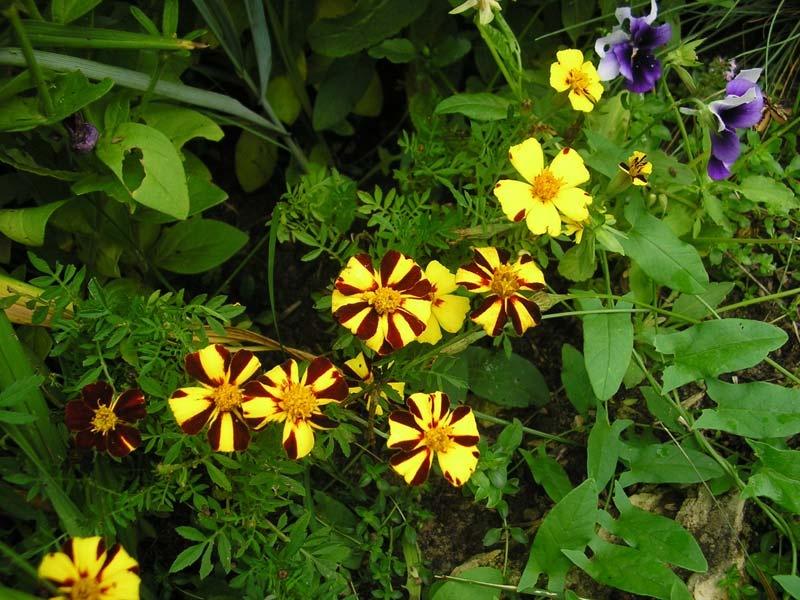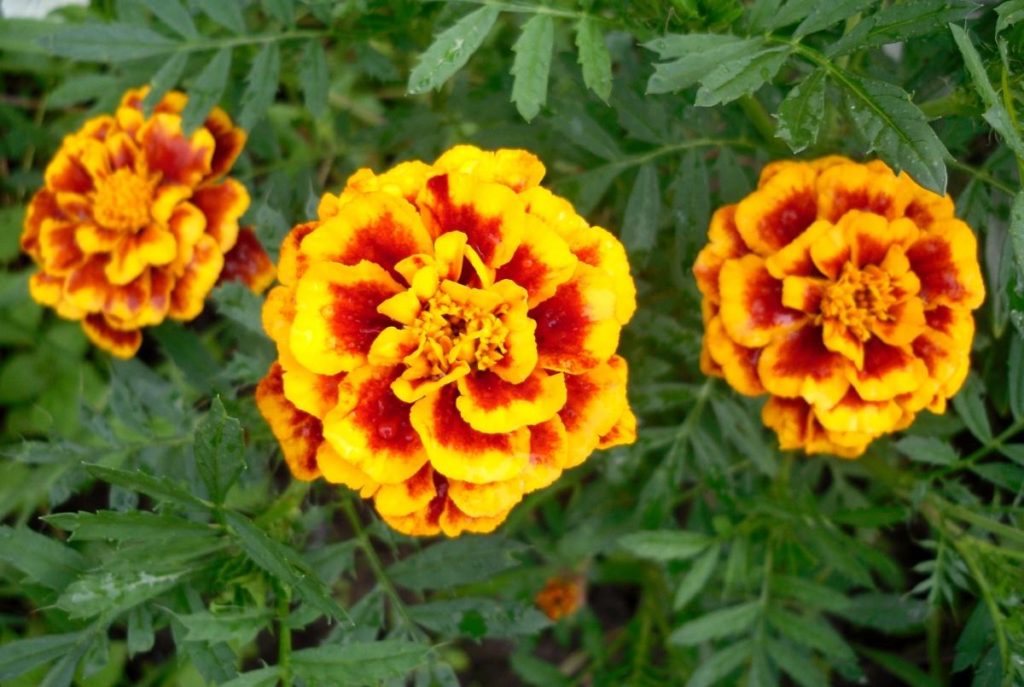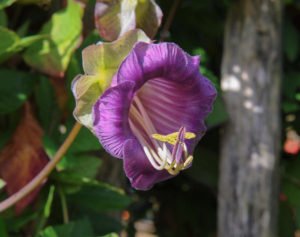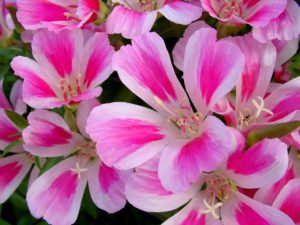Marigolds are permanent inhabitants of most garden plots in Ukraine and Russia, although their homeland is America. It is unpretentious, charming and decorative, very easy to grow. Even a beginner can handle them.
Planting marigolds
Seeds in the open ground are sown in a wide, deep hole at a distance of 1.5 cm (0.6 in) from each other, so that it is not thick and the seedlings do not stretch and do not rot. Top with a thin layer of earth sprinkle 0.5-1 cm (0.2-0.4 in) and pour thoroughly. The watering regime can be moderate for the emergence of seedlings, and they will appear very quickly. When you have 2-3 pairs of leaves, transplant the seedlings to a permanent place at a sufficient distance (not much) and bury it for another 2 cm (0.8 in).
Seeds can be purchased only for the first planting, and then at the end of flowering, collect them. Leave a few flowers on the drooping bush, let them completely wither. It is important to note that it was raining at this time. Then you can easily extract the mature seeds from the cup, which you will dry and save until spring.
The rule “the earlier they plant, the earlier they bloom” is well suited for marigolds. If desired, you can sow seeds for seedlings in early spring. Keep the seedlings in a warm and bright room until May. Then, within a week, make a container of outdoor air so that the seedlings get used to the new conditions, and then plant them in a permanent place.
The land should be loose: sod-humus-peat-sand (1:1:1:0,5). To prevent “black legs”, they provide good drainage of flowers from 3 cm (1.2 in) of gravel, expanded clay and sand. In the soil before planting, you can add prepared fertilizer, but not fresh manure.
Caring for marigolds
Marigolds can grow in shade and partial shade, but will bloom more luxuriantly in the sun. The main thing is that it is not excessively humid and dark. Before germination, the desired temperature is 22-25 °C (71.6-77°F). When the wind is cool, the flowers need protection. The soil should be well moistened during the growing season. Take care of the flowers evenly, without special omissions. Of all the marigolds, the most unpretentious, rejected, will take root in any soil and will bloom profusely even without fertilizers. If you want to fertilize, do it once a month, otherwise the bush will grow quickly and it will not bloom.
During growth, watering should be moderate, and later it will need to be reduced to avoid stagnation of water, from which the plants get sick, rot and do not bloom. In the summer heat, it is better to water in the evenings. Marigolds can easily live without fertilizers, but they will respond to them very gratefully. Fertilizers are applied three times: when the seedlings grow to 10 cm (3.9 in), when the first buds appear and bloom. You can use a complex fertilizer.
Regularly weed and loosen the soil, because they love loose soil and the need to breathe. Summer haircut-this will help to create lush beautiful bushes. They will bloom more strongly if you remove the wilted inflorescences.
In the autumn, after withering and drying, they are collected from the garden.
Marigolds can grow in a pot. To do this, plant them in the fall, and then in the spring the bush will bloom.
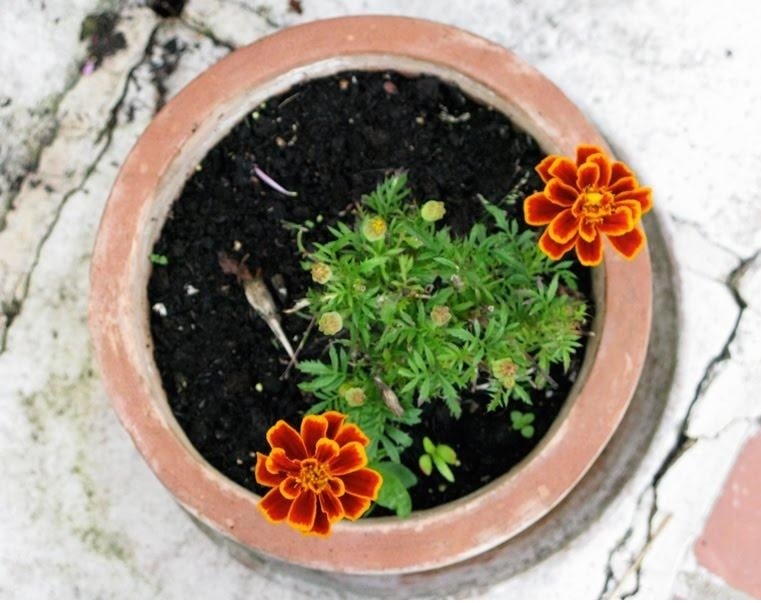
Diseases and pests
The specific aromatic smell of marigolds, as well as the same aroma of secretions from the roots to the soil, is a protection against fungal diseases not only for the flowers themselves, but also for everything that grows nearby. No wonder professionals offer to frame almost the entire garden plot with marigolds! For the same purpose, we planted thyme.
Healthy nails depend on care. If it’s too dry, you can get Tetranychus urticae. With humidity-fungus and rot. In the first case, correct the situation by watering and spraying, in the second by drying and heating. When snails and slugs appear, it is better not to use toxic sprays, as the flowers do not like it. Due to the humidity and density of planting, a dark brown wet spot – Botrytis cinerea – may appear on the stems and leaves. Infected plants are immediately destroyed before they infect healthy ones.
Marigolds and landscape design
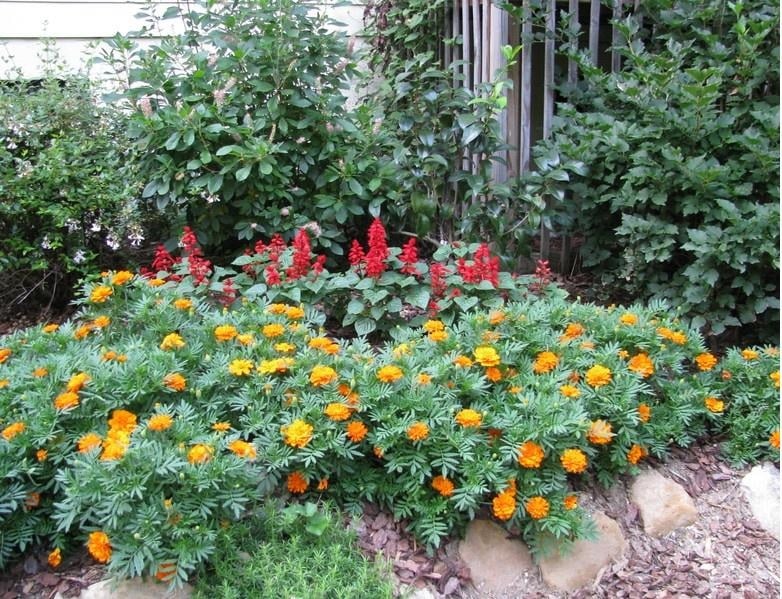
You can plant marigolds almost anywhere, except near reservoirs and dense shade. Depending on the shape of the bush (spherical, compact, inverted pyramid) and the height of the stems (20-120 cm/0.6-3.9 ft), try to plant low-growing ones on the edges of the borders, and higher ones-closer to the center of the flowerbed, so that all the flowers are visible on the flowerbed. The color palette of the flower bed can be almost monochromatic (for example, all shades of golden yellow) or contrasting (red-white, brown and yellow). From summer to autumn, the flowers will not lose their decorative effect, because the dried inflorescences will hide under the blooming ones.
The common problem of all lovers is to plant their favorite vegetables and fruits to the maximum, and there is not enough space for flowers. Then you can plant marigolds around the perimeter of the garden along with potatoes or any other vegetables.
Types of marigolds
Professional gardeners know almost 60 types of marigolds. Of these, the most popular are three: erect, small-leaved and discarded. In America, they not only decorate the beds, but are also used in medicine. In some countries, a popular dressing is made — Imereti saffron (specific leaves have a spicy aroma).
Flowers by analogy with chamomile can be simple, semi-double and double, similar to a carnation. The dark green leaves are no less beautiful than the flowers that can stand in the water in the cut.
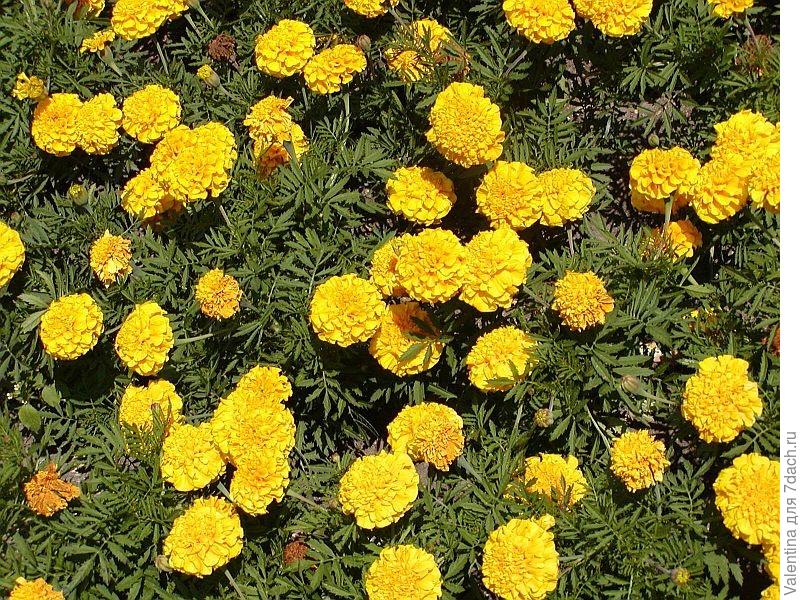
Tagetes erecta
The plant is annual. The bush has a well-defined main shoot, can be compact or sprawling. The stems are strongly branched, up to 1.2 m (3.9 ft) high with large inflorescences-baskets up to 13 cm (5.1 in) in diameter on long peduncles. Inflorescences of yellow color of monophonic shades or two-tone. Blooms in late June-early July.

Taget es patula
Annual straight branched stems, linear-lanceolate, pointed, toothed leaves. The head is a medium-sized inflorescence, sitting on thick stems. The leaves fused together. Blooms in late July.
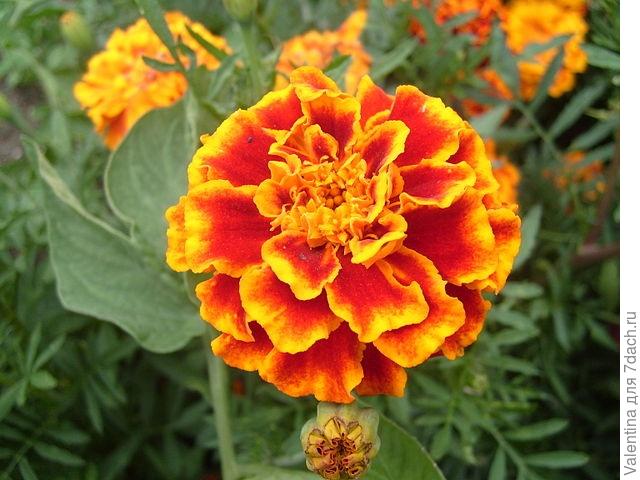
Tagetes tenuifolia
An annual, low compact shrub with a height of 20-40 cm (7.9-15.7 in), densely branched with small leaves. Small baskets with simple inflorescences, sitting on short stems, are collected in corymbose inflorescences of yellow or yellow-orange shades.

Tagetes anisala
The stem, leaves and flowers have the smell and taste of tarragon, it is much more pleasant and stronger. The fragrance can be heard even at a considerable distance. Blooms profusely all summer. It is well suited for any type of flower garden, even with a limited amount of soil. Unpretentious, drought-resistant, but loves the heat. Even greens can easily delay transplanting.
There are many varieties of marigolds with different colors, duality, and size of plants and flowers.
